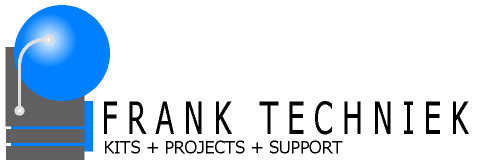
|
|
|
Universal Nixie Clock Board UNIV-6-V1 The electronics for this clock are largely inspired by the other kits. The tubes are not mounted directly on this board. You can use any type of tube, use your own sockets or display construction, and run the wires to this control board. Also, this board uses traditional components, no surface mounted stuff. Sometimes I get requests about kits using traditional components. I always respond that SMD components are not difficult to handle. I know, because many customers had their first experience with SMD's through one of my kits, and all were succesful and amazed that it was a lot easier than they expected. Another advantage of SMD's is that they are cheaper. Anyway, this kit is an answer to those who are a bit afraid of those little SMD components. Perhaps I'll make an SMD version of this kit too, later. Okay, enough talk, here's some more information about this great universal kit. The dimensions are quite modest, it measures about 115mm x 80mm (WxD).
The power supply for this clock is just a simple 12VDC adapter. You probably have a spare one, or you can find one locally. This board also has place for RTC option and connections for a DCF77 (Europe) or WWVB (USA) atomic time receiver. It has a voltage dropper for the receiver modules, like the DCF77 modules that run on lower voltages. Check the schematics to see how it's done, there are some instructions there as well. In the right-bottom corner you can see the HV generator that converts 12V into an adjustable an regulated 135V - 180V, the high voltage supply for the nixie tubes. The HV generator can deliver a bit more juice than usual, to be able to drive really large tubes, like the large IN18 tubes for instance. The large IC is the familiar PIC microcontroller. In this design it is driven by an Seiko oscillator of 18.1818MHz, IC103. This oscillator ensures a reasonable initial accuracy. For a better accuracy, you can calibrate the clock in software. The microcontroller is fed by a 5V regulator. You can also see the RTC components in the left-bottom corner, using the Dallas DS1302, a 32.768 KHz crystal and the SuperCap, which is above the RTC chip. All very reliable and proven circuits. The row of 1N4148 diodes are the anti-ghosting circuit, well, the hardware part of it. Some of the anti-ghosting is done in software, a special sequence of turning on/off the anodes and cathodes. Some people ask if the multiplexing causes flicker, the answer is no. The refresh-rate is very high, tight software routines take care of the very fast switching needed. You can mount your own tubes, running a bunch of wires to U1-U6 to the tubes or tubes sockets. All the U1-U6 connections are the same, a wire for the anode and ten wires for the digits. U1 is a bit special, it also carries the signals for the other anodes of U2-U6, which makes it easier to do the multiplexing wiring at the tube sockets. It's up to you what you like most. For the small IN17 tubes I designed an adapter board that simply plugs into the UNIV-6-V1. The board allows you to mount LED's under the the nixie tubes, if you fancy that. This is a seperate kit, so you don't need to buy it, if you want to use other types of tubes. I first used blue leds - very nice - but also tried white leds. The IN17 tubes guide the light in an unusual way. The inside of the tube stays quite untouched, but the side of the glass lights up in the color of the leds used. The picture below looks as if the tubes are some kind of ice-cubes...
You can find the kits in my web shop. If you want to use your own nixie tubes, just order the main board. If you don't have any tubes, you can order the main board plus an IN17 board, including the tubes. You can also order the IN17 board later. Current version is V1. Files for Universal Nixie Clock UNIV-6-V1
List of Nixie Clock UNIV-6-V1 owners
Last updated 7 november 2005
|